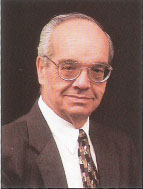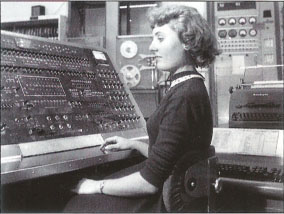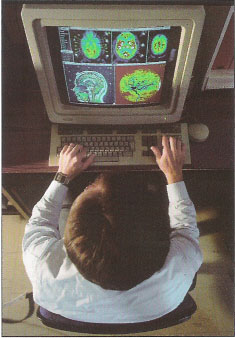All Issues
Population change to challenge Californians
Publication Information
California Agriculture 54(1):4-5.
Published January 01, 2000
PDF | Citation | Permissions
Full text
As we enter the 21st century — whether we believe that occurred in January 2000 or will occur in January 2001 — we have come to a threshold where it is appropriate to reflect and imagine.
California Agriculture launches “Future in focus: 2000–2025” knowing that we cannot, in fact, predict the future. As we write, circumstances continue to transform the world in ways we could not have foreseen 10 or 15 years ago:
-
In 1989, the Internet was virtually unknown. Had we predicted its worldwide impact then, few would have known what we were talking about. Today it connects 63 million computers, each to a volume of data approaching that of the Library of Congress.
-
In 1983 the world's fastest computer could perform 300 million (floating-point) operations per second and occupied a room as large as a lecture hall. Today three children equipped with desktop Nintendo machines have equivalent processing power.
-
Researchers considered the obstacles to animal cloning insurmountable 15 years ago. Then in 1997, Scottish scientists shocked the world by cloning Dolly from the cultured mammary gland cell of a 16-year-old ewe — itself long dead. Since then, scientists have successfully cloned living animals from adult cells of cattle and laboratory mice, among others.
By 2050, U.S. population is projected to increase almost 50%. Even more dramatic, California growth may approach 100%. While immigration currently accounts for one-third of U.S. growth, it accounts for 74% of California growth.
Innovation and information have burgeoned in recent decades. Today, it is estimated that human knowledge doubles every 5 years. Both directly and indirectly, public and private universities have made this possible. If innovation and information are driving the future, then education and research institutions are fueling the engines.
Given that, what can UC, and specifically the Division of Agriculture and Natural Resources, add to the discussion of California's future? If we cannot predict the future, what is the purpose of the “Future in focus: 2000-2025” series?
Today there is an urgent need to expand the traditional roles of the University. In the future, UC faculty and researchers will be asked not only to research and educate, but also to equip the general public and policy-makers to navigate esoteric, often contradictory scientific information.
For the series, UC scientists and other experts have been asked to do just that. They have been charged with analyzing what we know today, projecting scenarios for 2025 and beyond and identifying key questions and issues that loom ahead. We hope that their prognostication and speculation can serve as a basis for discussion and development of new ideas. With that goal in mind, we have asked them to be both imaginative and provocative.
In this first issue, we consider population, and how future demographic changes and increased diversity might affect the state's agriculture, economy and educational system. The second (March-April) explores the effects of population and other forces on California's natural resources. The third (July-August) examines the role of high-precision techniques and biotechnology in defining the agriculture of the future. The fourth (September-October) considers food security, addressing problems of hunger, nutrition and food safety.
While our emphasis is on California, we will also view these subjects in a larger context. For example, during my lifetime, the population of California has increased 500%, that of the United States has more than doubled, and world population has increased from 2 billion to 6 billion. By 2050, U.S. population is projected to increase almost 50%. Even more dramatic, California growth may approach 100%. While immigration currently accounts for one-third of U.S. growth, it accounts for 74% of California growth. Migratory pressures including family unification and job-seeking are expected to rise.
To meet the increased food demands of billions of additional people and protect our natu-ral resources, we will need new ideas and new thinking. We cannot return to the “good old days,” when we were asked to feed far fewer people. We cannot simply expand existing agriculture unless we find a source for the additional 1.6 billion acre-feet of water the world may need for food production by 2030. It is meaningless in a global sense to control the harvest of forests in California if we simply increase consumption of lumber from forests elsewhere.
UC's Lawrence Livermore National Laboratory obtained its first computer, a Univac, in 1952. In 2000, the lab was poised to bring online one of the world's fastest supercomputers, with the capacity to make 10 trillion calculations per second.
With its burgeoning and diverse population, California is at the vanguard of emerging issues and problems. In this issue, for instance, we learn that immigration is likely to fuel continued population growth.
The implications of immigration vary widely ( see p. 11 ). In Silicon Valley, for example, highly skilled immigrants have experienced rapid upward mobility and cultural integration. They have secured their grasp on the American dream.
In the rural towns of the Central Valley, however, immigrants have frequently found themselves living in poverty and the dream has been more elusive ( see p. 26 ). If the eight counties of the San Joaquin Valley were a state, it would be the number-one agricultural state in the nation, but it would also be the state with the highest unemployment and would rank 49th in per capita income.
If we are to overcome these disturbing realities, there is a need for long-term work-force development and job creation linked to economic growth. Clusters of integrated, specialized industries, ranging from agriculture and food processing to biomedical supplies and information technology, promise an economic boost for the Central Valley ( see p. 41 ).
To fully participate in the Valley's emerging industries will require the acquisition of new skills by the labor force. An opportunity exists for collaboration among public and private partners, including universities, to upgrade the local work force and cooperate in regional economic development.
Today's computers have the capacity to perform complex research functions, such as this three-dimensional brain scan at UCLA.
In the first few years of the new millennium, based on best estimates, California will no longer have a non-Hispanic, white majority. By 2030 almost 40% of the population will be Hispanic. Asians and Hispanics together will make up more than two-thirds of the state's population, bringing new cultural issues and a changing political outlook.
As population and world consumption continue to grow, we are approaching many days of reckoning. DANR scientists and their colleagues have the expertise to help society evaluate the risks and benefits of that consumption, whether in sustaining complex ecosystems, developing genetically modified food crops, or allocating water to cities, wildlife and agriculture. We can examine alternatives, evaluate systems, and inform public policy.
With a framework of UC Cooperative Extension advisors in California's 58 counties, we are positioned to extend research to youth, families, businesses and public policy-makers. We can help our traditional clientele and develop new understanding and educational advancement for millions of new Californians.
Since they were established in the time of Abraham Lincoln, the land-grant universities have had the mandate to “bring the university to the people.” More than ever before, we must use our research and extension collaboration to do so. Good science and sound public policy go together. The problem of defining a sustainable way of life in the 21st century can be solved through research, innovation and development of our greatest asset, human resources.







